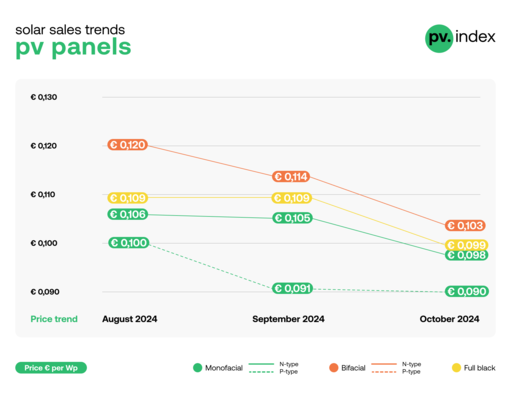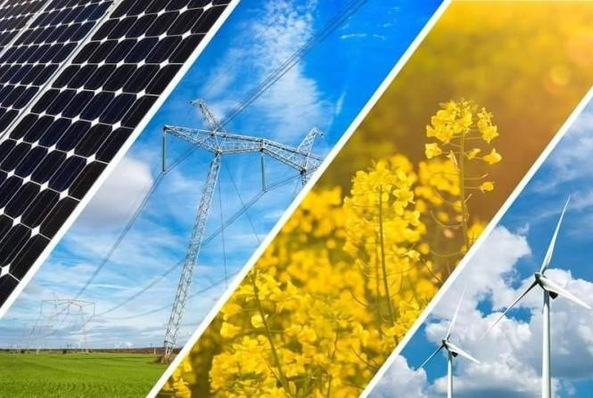The prices for solar modules have dropped again this month, but not as much as a month before. In fact, panels in all segments cost on average one cent per watt less than in September this year. Standard modules, for example, are now trading for 19 cents per watt. Even the efficient modules with an efficiency of more than 22 per cent and modern cell technologies are selling for an average of 27 cents per watt.
One third less than at the beginning of the year
This means that the modules cost on average about one third less than at the beginning of this year. Despite the renewed decline in the past four weeks, Martin Schachinger, Managing Director of the online marketplace for solar components PV Xchange, sees a slight easing. The downward trend in module prices is clearly losing momentum, he knows. "Manufacturers and traders of solar modules are still lowering their prices, but only in small steps," Martin Schachinger describes the strategy. "They are trying to slowly approach the price level accepted by the market."
Minimising damage in China
After all, no one earns anything anymore with the products at this price level - neither the manufacturers nor the wholesalers. "It's all about damage minimisation in China, too. Because unsold stocks generate avoidable costs and the risk of a progressive devaluation is always present. In order not to have to pay extra for transport costs, the export quantities to Europe have been drastically reduced by Asian producers in recent weeks," explains the PV-Xchange boss. "Even Chinese manufacturers cannot hold out against a prolonged period of low prices for long and are already trying to stabilise prices again through artificial shortages. If demand picks up again towards the end of the year due to the current price situation, the slide could soon be stopped."
Modules more expensive in the USA
He draws a comparison with other markets. The price gap between Europe and the USA, for example, is wide. In the United States, solar modules sometimes cost twice as much as in Europe. But this is not a free way out for manufacturers from China. This is because products produced in China cannot simply be diverted to America, where there are strict import restrictions. "That keeps prices high there and the market volume low," says Schachinger. "We can be curious to see whether the Inflation Reduction Act - IRA 2022 - will really have the desired and needed impact on local photovoltaic generation capacities there. At least with the currently still very high acquisition and installation costs in the states, it is rather unlikely."
Subsidies do not help in the long run
Schachinger warns against transferring the American model of import restrictions in combination with investment subsidies to Europe. This is risky, he says, even if it means that Chinese manufacturers shift their sales focus to the USA in order to take advantage of the benefits there. "An industry cannot be kept alive permanently by subsidies, we should all have learned that by now," warns Martin Schachinger. (su/mfo)
See also:








